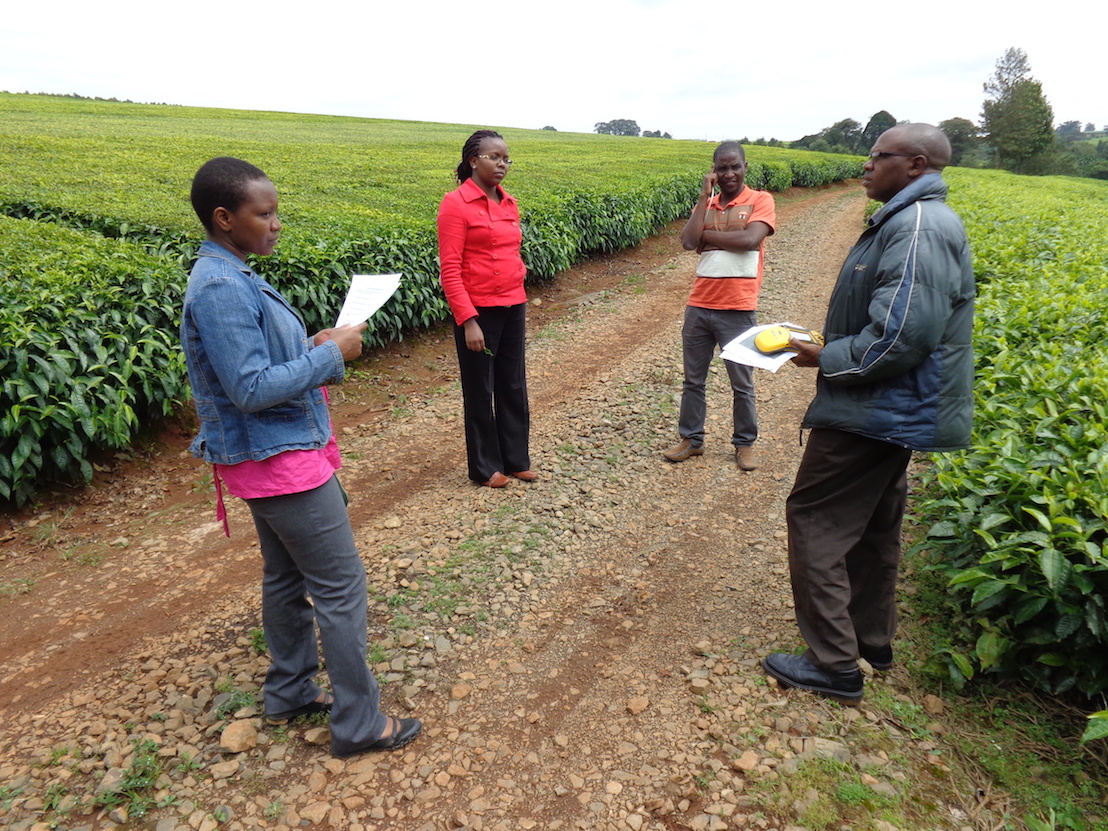SERVIR Summer Intern develops mobile app to report frost events
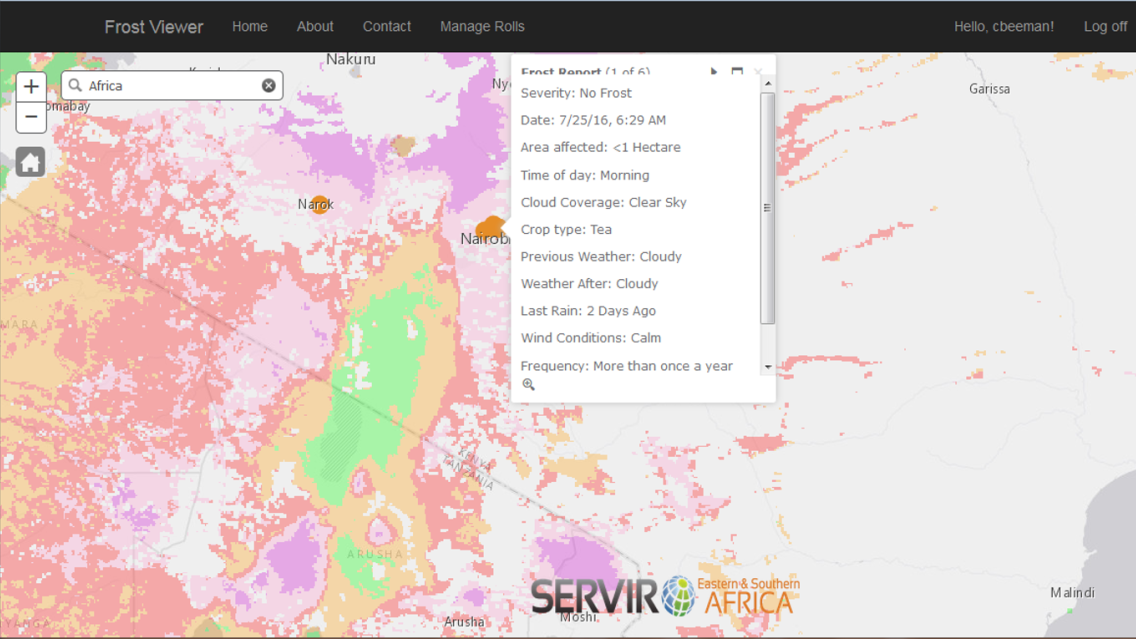
Charity Beeman, a senior at Troy University majoring in Computer Science, has been working on a unique project this summer as an intern with SERVIR. She’s been creating a mobile phone application for collecting data to help with frost forecasting in Kenya. Her efforts could help protect Kenya’s tea crop in the future.
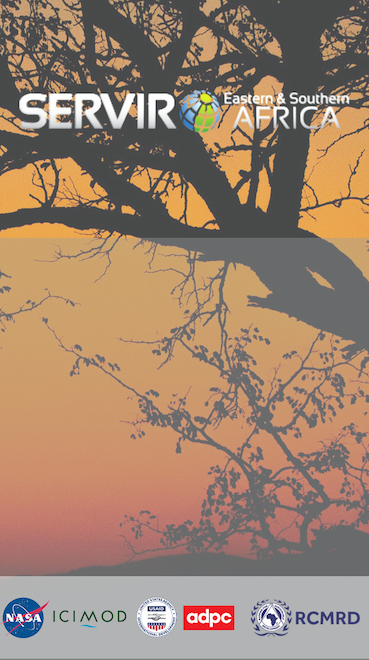
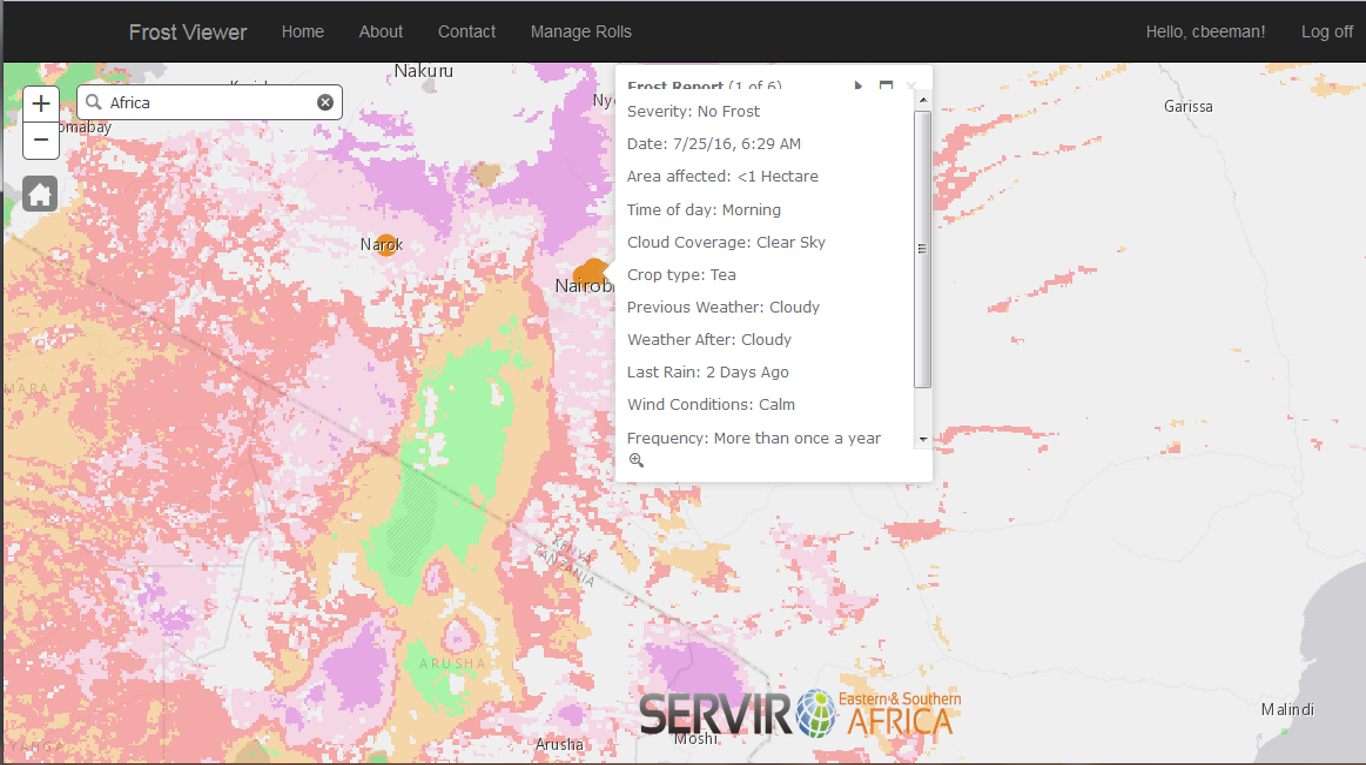
Kenya ranks third in the world in yearly tea production. In fact, the tea industry provides a living for about 4 million Kenyans, or about 10% of the total population.* During January, February, and March, frost -- a subtle but pervasive enemy – threatens the tea crop. It can cause millions of dollars in damage. In 2012, for example, a severe frost caused almost 30% tea crop loss in the Nandi area of Kenya.
In 2013, Susan Kotikot, a former SERVIR intern now working as a graduate research assistant at the SERVIR Coordination Office, helped start a frost mapping initiative for Kenya. Under SERVIR-Eastern & Southern Africa and its host organization, the Regional Centre for Mapping of Resources for Development (RCMRD), that project has now evolved into an automated, near real-time frost mapping system. The system identifies and displays probable frost-impacted areas by analyzing nighttime land surface temperature datasets from NASA's Moderate Resolution Imaging Spectroradiometer (MODIS) onboard the Terra and Aqua satellites.
Beeman’s mobile application will help to enhance that frost mapping system by enabling crowdsourced data collection. Farmers in Kenya will use the app to report information about actual frost events they experience with their tea crops. They will enter details such as exact location, date, and time of the frost as well as its extent and severity. Such information is critical to continued development of the frost mapping system.
“This precise data (frost reports) will help us to validate the system, make it reliable, and move toward the next phase – frost forecasting,” notes Kotikot.
She explains that the paper-based collection system used in the past lacked accuracy because the maps used to identify frost locations were sometimes interpreted incorrectly, the forms were easily damaged, and it was difficult to obtain responses from farmers.
Beeman’s app converts the paper collection form to an online reporting system where farmers simply select the location of a frost event on a map displayed on their phone, fill out a details form on their phone, and submit a report at the touch of a button. From there, SERVIR-Eastern & Southern Africa /RCMRD can easily collect the information through the website that has been created for viewing and data analysis.
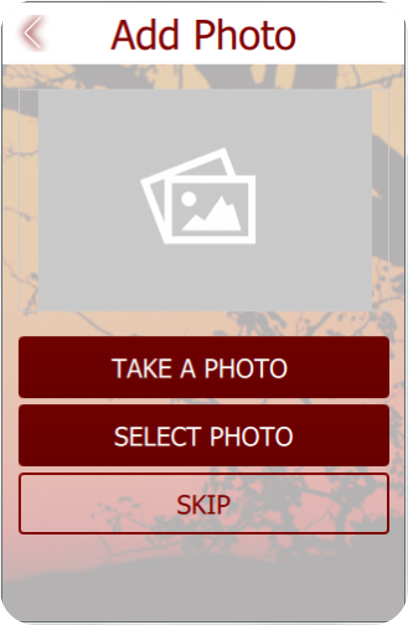
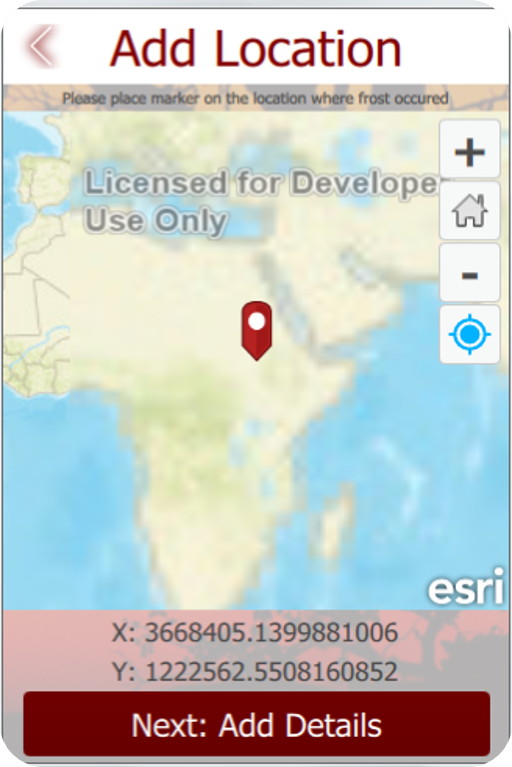
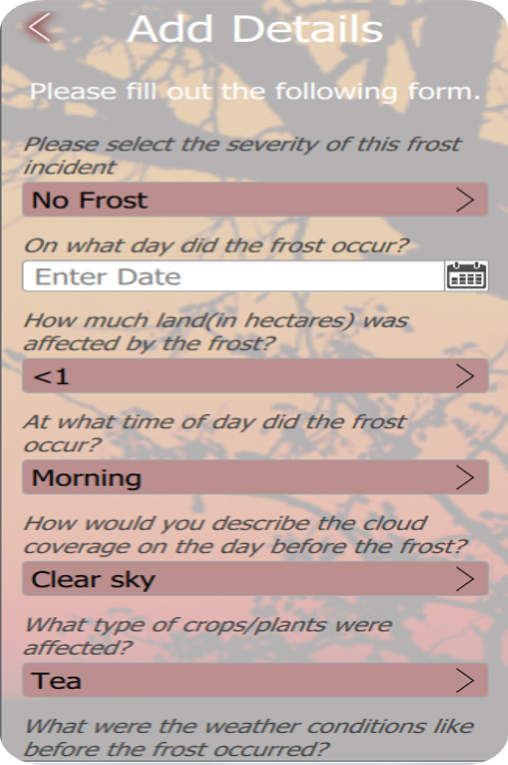
“This is the first phone crowdsourcing application for SERVIR-Eastern and Southern Africa,” says Beeman. “The app has been sent to our partners at SERVIR-Eastern & Southern Africa/RCMRD for review. With their feedback, the app can be better customized and improved to meet the needs of our end users. Though further development is still needed, this application is on track to be used during the next frost season. I’m hoping it will open the door to more applications like this one, perhaps for use by other SERVIR hubs.”
Notes:
[*Tea Research Foundation of Kenya Quarterly BULLETIN Vol.17: No.1, January/March 2012]


